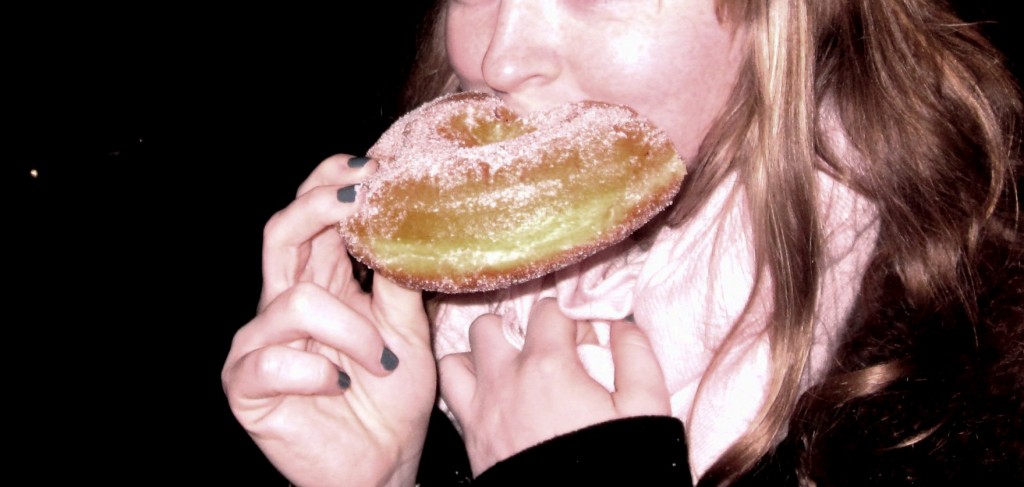 Westbound travelers rejoice: San Francisco has an extensive and inexpensive public transportation network that makes getting around without a burdensome car the preferred method of sightseeing. The star intra-city player? San Francisco Municipal Railway, locally known as “Muni.” Muni operates all buses, streetcars, and cable lines within city limits and can deliver you just about anywhere for $2 (or $6 by cable car). But what’s the difference between a streetcar and a cable car? Which one should you ride? And what’s a trolley coach?! While Muni has an excellent website that will answer virtually all of your burning public transit questions, you need to learn the lingo before you roll in. Here’s a crash course on how to differentiate between Muni’s most useful services and when you should use them:
Westbound travelers rejoice: San Francisco has an extensive and inexpensive public transportation network that makes getting around without a burdensome car the preferred method of sightseeing. The star intra-city player? San Francisco Municipal Railway, locally known as “Muni.” Muni operates all buses, streetcars, and cable lines within city limits and can deliver you just about anywhere for $2 (or $6 by cable car). But what’s the difference between a streetcar and a cable car? Which one should you ride? And what’s a trolley coach?! While Muni has an excellent website that will answer virtually all of your burning public transit questions, you need to learn the lingo before you roll in. Here’s a crash course on how to differentiate between Muni’s most useful services and when you should use them:
Cable cars: If it runs on steel rails with no overhead wires, it’s a cable car. A renowned San Francisco icon that draws thousands of tourists every year, the city’s Powell-Mason, Powell-Hyde, and California Street cable car lines are the only manually operated ones left in the world. Which is why the turnarounds are such a zoo, especially during peak summer months. Get there early, convince yourself that you love crowds, and don’t be afraid to abort mission and seek refuge in Forever 21’s three nearby floors of retail therapy euphoria if the going gets too tough. Stick it out, however, and you won’t regret it. Where else can you hang off the sides of rickety automotive relics as you cruise up and down the hills of a stunning city?
Streetcars: If it runs on steel rails and is connected to an overhead wire, it’s a streetcar. Far faster than any earlier form of urban transportation, the streetcar quickly eclipsed the cable car as America’s choice for transit in the first half of the 20th century. Although San Francisco has the world’s most diverse collection of streetcars in regular transit service, making them more difficult to classify by sight than cable cars, there’s really only one line you need to pay attention to: F Market & Wharves. This notable streetcar route uses exclusively historic equipment from SF’s retired fleet and runs six miles each way between Fisherman’s Wharf and the Castro District. (Other historic and modern sites along the way include Union Square, SF’s ferry building, the Embarcadero, and Pier 39.) Despite its heritage status, F Market & Wharves remains an integral part of SF’s transport network and is used by thousands of residents in addition to tourists. Like the cable cars, arrive early and be prepared for crowds.
Light rail (Muni Metro): If it runs on steel rails and operates both above and below ground, it’s the light rail. More commonly known as Muni Metro, SF’s seven light rail lines are a modern reincarnation of the traditional streetcar system that had served San Francisco since the late 19th century. Use Muni Metro for visiting areas away from the central portion of the city, specifically the south and west. On your way to watch the San Francisco Giants win another World Series at AT&T Park (because you love them and they will), take the KT or N rail and hop off at King and 2nd.
Trolley Coaches: If it connects to a pair of overhead wires but has rubber tires like a bus, it’s a trolley coach. SF is one of the few American cities to operate them, and they’re a relatively convenient way to reach the more obscure and secluded parts of the city—especially if they’re uphill. SF’s trolley system includes the steepest known grade on any trolley bus line in the world at 22.8% (on route 24-Divisadero). Use NextBus to check other routes serving your stop, make spontaneous changes in plans, and obtain real-time passenger info and reliable arrival times.
Bay Area Rapid Transit (BART): Although not operated by Muni, BART is another widely used subway system that is integral to getting around SF and the greater Bay Area. Passengers may encounter the occasional stench of urine, obnoxious and inebriated late-night passengers, and a couple of seats that they’d rather burn than put through a black light test, but what BART lacks in sanitation it makes up for in accessibility and shamelessly entertaining people-watching. If you can tolerate a few quirks ($15 worth of change in quarters), disruptions (frequent strikes), and controversy (i.e. the 2009 BART police shooting of Oscar Grant), then BART is the perfect way to leave the inner-City tourist attractions behind and efficiently travel in and around the Bay like a local.
*Photo from Wikimedia Commons

